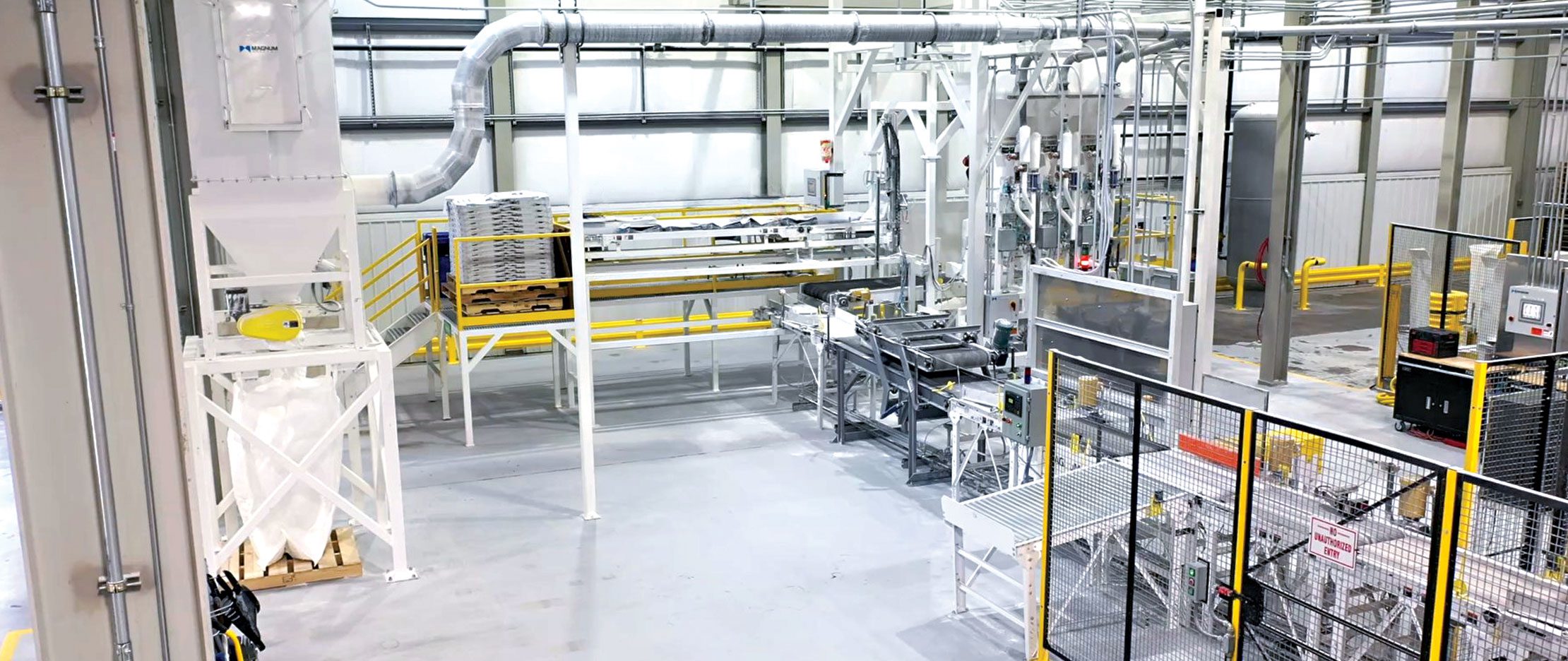
For most people, “dust control” might mean general cleanliness. However, pneumatic conveying dust control is more than simply being neat and tidy. The efficiency and efficacy of this technology hinges on proper dust control management.
First, what is pneumatic conveying? Pneumatic conveying is a widely used method for transporting dry bulk materials, such as powders and granules, from one location to another through pipelines using air as the conveying medium. Unlike traditional mechanical conveying systems, pneumatic systems can navigate complex routes, making them highly adaptable for various industrial applications.
While it offers numerous advantages, such as flexibility and efficiency, pneumatic conveying presents unique challenges, specifically in terms of dust control. After the bulk of the material is transferred in the pneumatic conveying system, residual dust remains in the airstream. Effectively managing this residual dust is where dust collection plays a critical role in maintaining a safe, efficient, and environmentally friendly operation.
The Risks of Dust in Pneumatic Conveying
Uncontrolled dust in pneumatic conveying systems can pose several risks. Airborne dust particles can lead to hazardous working conditions, increasing workers' risk of explosions and respiratory issues.
Dust accumulation can also cause wear and tear on system components, leading to increased maintenance costs and potential downtime.
Let's take a deeper look at the risks mentioned above:
Moreover, certain types of dust can be combustible, creating explosion hazards if not properly managed.
Effective Dust Control Strategies for Pneumatic Conveying
Here are several widely used strategies to manage dust:
1. Spot (Local) Dust Collection
Spot dust collection, also known as local dust collection, involves using portable or smaller fixed units to capture dust at specific generation points.
These systems are ideal for:
Benefits of spot dust collection:
Spot collectors may have shorter filter life and require more frequent manual cleaning than central systems.
2. Central Dust Collection
Central dust collection systems are designed to handle dust from multiple sources throughout a facility. Central systems can efficiently capture and remove airborne dust and fumes in industrial settings, maintaining a cleaner work environment.
These systems are better suited for:
Advantages of central dust collection:
3. Other Dust Collection Options
Benefits of Effective Dust Control
Implementing effective dust control measures in pneumatic conveying systems offers significant benefits:
As technology advances, new and innovative dust control solutions will likely emerge, further enhancing the capabilities and safety of pneumatic conveying systems across various industries. Remember, the specific dust control needs for a pneumatic conveying system will vary depending on the materials being conveyed and the operational environment. Consulting with pneumatic conveying experts can help develop a tailored dust control strategy that meets your requirements and ensures optimal system performance. Contact Magnum Systems for more information about keeping your system clean and safe.
Magnum Systems podcast series, AIM!
RELATED POSTS
Eight Key FAQs About Pneumatic Conveying for Safe and Effective Operations
What is a Pneumatic Conveying System?
Magnum Systems’ Pneumatic Conveying: Small Systems, Big Impact
Eight Key FAQs About Pneumatic Conveying for Safe and Effective Operations
Related Post
Custom Systems Integration: Why One-Size-Fits-All Solutions Fail
Five Ways to Expand Automation Through Controls Migration Without Sacrificing Employee Morale
Predictive Maintenance Part Three: Predicting the Future of Industrial Systems